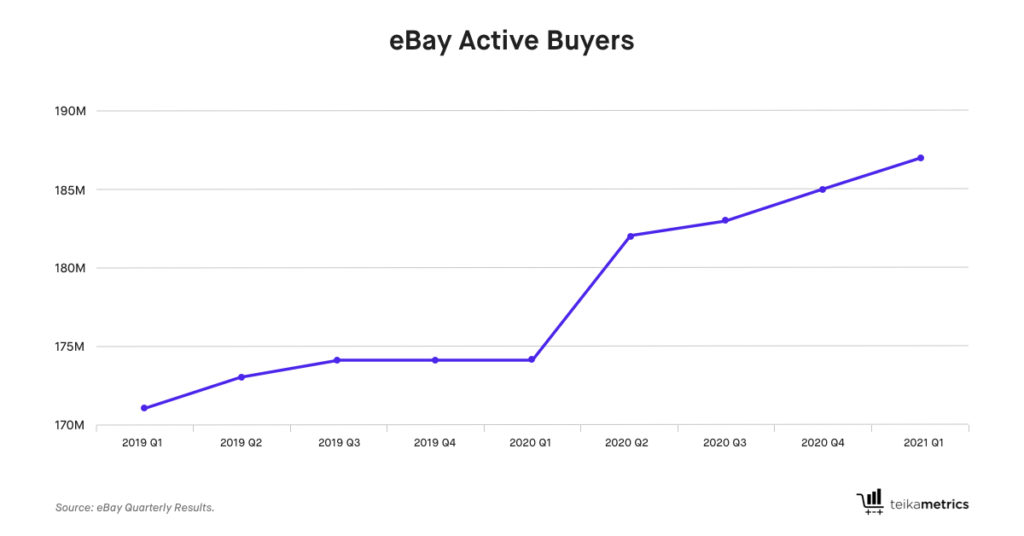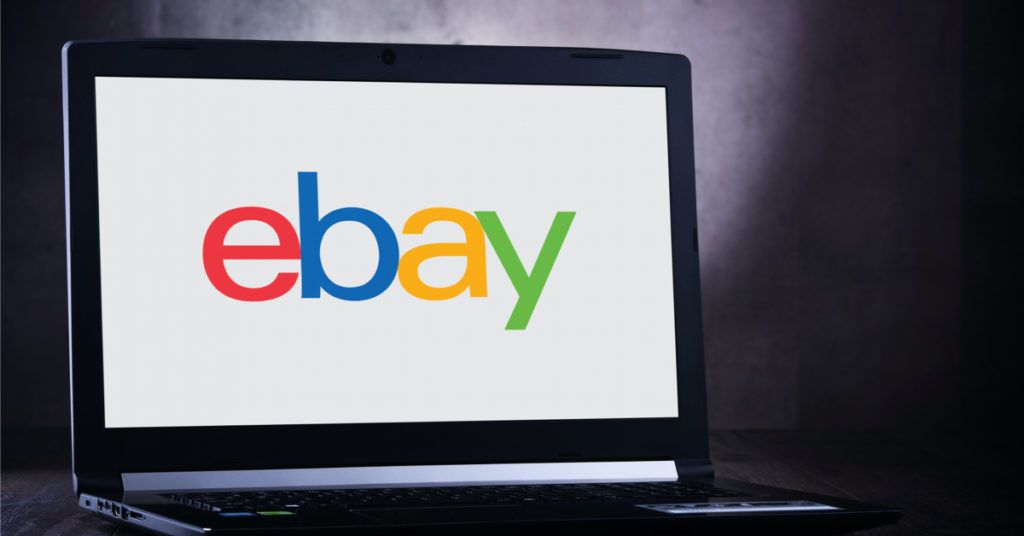If you haven’t considered selling on eBay recently, this summer is the time to give the site a fresh look.
Sellers and brands are flocking to eBay and the count of sellers has now grown to 20 million active sellers globally. They’re discovering a sizable shopper audience looking for quality products to meet their needs.
Meanwhile, many people have misconceptions about eBay and don’t realize the incredible business opportunity or understand how eBay works in 2021.
So, let’s break it down, from eBay’s origins in a spare bedroom in 1995 to a global ecommerce leader in 2021 ready to help you grow your business.
The amazing eBay story
Last year eBay celebrated its 25th anniversary. For a quarter-century, eBay has pioneered and innovated technology for buying and selling, evolving and growing into the sophisticated ecommerce site it is today.
Back in 1995, a fellow named Mark Fraser made the first purchase ever on eBay. Founder Pierre Omidyar had coded the site himself and wasn’t even calling it eBay yet. Pierre listed a broken laser pointer for sale on the site. Mark, who’d been wanting a laser pointer for work but didn’t have the budget for a new one, bought the broken laser pointer.
Amazingly, Mark went on to buy another two thousand items on eBay over the next two decades. More amazingly, the site Pierre built grew to be one of the largest ecommerce marketplaces in the world, and it’s still growing in 2021.

How eBay evolved to support businesses
Those of us who are old enough to remember the 90s may have an outdated view of eBay as a place to auction used items you find in the garage. eBay does still offer an auction model for person-to-person sales, but that’s a small piece of what the site now offers.
As early as 2000, eBay introduced the “Buy It Now” fixed price option to bypass the auction. In 2001 they introduced eBay Stores, opening up the ability to run a branded business on eBay. The Seller Hub came in 2006, giving sellers a central location from which to manage and grow their eBay business.
These are some of the variety of tools that make eBay a powerful channel for sellers and brands looking for the next marketplace to expand their business.
eBay by the numbers
eBay’s evolution has brought an increasing number of shoppers to the site. Most recently, the shift in shopper behavior during the pandemic that accelerated ecommerce growth elsewhere has also left its fingerprints on eBay.
At the end of 2019, 174 million shoppers were actively using eBay. By Q1 of 2021, that number had reached 187 million active shoppers. That’s an additional 13 million individuals making purchases on eBay.

With more shoppers come more sales. Gross Merchandise Volume (GMV) is also on the rise for eBay. At the end of Q1 2021, GMV had risen to $10 billion.
How eBay supports sellers
Selling on eBay has never been easier for businesses, with a full suite of business tools needed to launch, optimize, and maintain your marketplace business.
- Inventory. To manage inventory, you can choose between API access, third-party services, or bulk uploads.
- Fulfillment. eBay’s shipping partners can help with order fulfillment and offer fast shipping to increase conversions.
- Market research. The retail site provides sellers and brands with eBay’s Terapeak data analysis tool for conducting market research and listing optimization.
- eBay Stores. And as mentioned previously, you can brand your business with a customizable eBay storefront subscription.
- eBay Ads. Additionally, eBay Ads’ tools promote your products and make them stand out amongst the billions of listings on eBay. You can offer discounts and coupons for shoppers who are looking for a deal. Promoted Listings boost your chances of making the top-of-search where most purchases happen, and they run on a no-risk cost-per-sale basis.
Get started with eBay
Before leaping on the eBay opportunity you’ll probably want to do more research for your specific business needs. Check if your categories are popular on eBay. Go to the site and try searching for your competitors’ products as well as complementary products within your vertical. This type of research will help you to better understand what the competition will be like for your business.
If you’re ready to take the leap and engage with eBay as a sales channel, eBay provides tons of help to get you going, including:
- eBay Selling – answers to frequently asked seller questions
- Seller Center – detailed information on all programs for sellers
- eBay Community – announcements and a seller forum
- eBay for Business Podcast – with weekly conversations with sellers and experts
- eBay Seller Events – opportunities to connect live with sellers and eBay staff
With so many resources available, you can find answers and help for all your questions about selling on eBay.
Takeaways
Looking back at the epic growth of eBay over its first 25 years, and the influx of energy brought on by new shopping habits in the last 15 months, you can bet that eBay is going to continue to innovate and grow.
Amazon and Walmart sellers have a fantastic opportunity to diversify their sales channels by adding eBay to the portfolio. The retail site’s expanded, robust set of business tools make it easy and profitable to reach the 187 million shoppers on the site.
As the eBay opportunity continues to grow, you need to put your business in the best position to capitalize and hone your strategy. Otherwise, your competitors will step in, putting you at a disadvantage down the line. For the same reasons we recommended getting into Walmart.com as that site’s ecommerce ecosystem expanded, now is the time to jump onto eBay.
Want to read more about expanding your business? Check out our recent blog about the opportunity on Target.com





